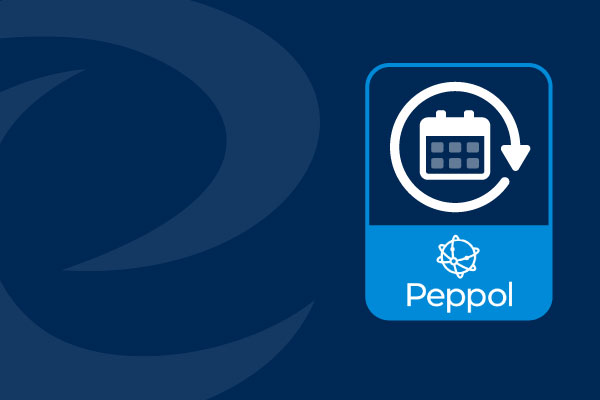The Future of Peppol

September 16, 2025
From an EU E-invoicing Directive to Widespread Adoption, the Peppol network is developing at an extraordinary rate. Across Europe and globally, new countries are choosing to become a part of the Peppol community. Adoption rates to date include 1.4 million companies currently registered in the Peppol network.
The latest statistics reveal that 20 countries have their own Peppol Authority, with this number thought to grow in 2026 and beyond. Outside of Europe, Peppol is growing significantly across APAC with countries such as Australia, New Zealand, Singapore, Malaysia and Japan already signed up.
In this blog, we will look at the key trends we expect to see with Peppol.
Expected Trends and Peppol’s future
Mandatory Peppol adoption across more jurisdictions. An increasing number of countries are embedding Peppol into their national e-invoicing mandates, making it a cornerstone of both B2G and B2B compliance.
More members are connecting to its infrastructure than ever before, and the range of maintained document types is increasing.
Peppol was born out of a demand for a standardised framework for e-invoicing. However, it is now becoming a secure global platform for digital document exchange.
Peppol and real-time data
Governments and businesses across the world are increasingly pushing for real-time reporting and transaction visibility. The future of e-invoicing will continue to be shaped by this demand for real-time data exchange.
As a result, Peppol will continue the development and enhancement of its real-time capabilities. The instant exchange of business documents has already improved cash flow and transparency in business transactions for thousands of businesses. This trend toward real-time data exchange will remain a key driver in Peppol’s evolution.
Peppol Beyond E-Invoicing
It is already possible to see how Peppol is expanding beyond only e-invoicing. Peppol now supports a growing set of document types, including orders, order confirmations, credit notes, and catalogues. This development paves the way for fully digitised procurement and trade processes.
Supported New Document Types
| Audience | New Document Type | Description |
| Buyers, sellers, logistics providers | Logistics | Standardised messages based on Universal Business Language/ISO standards. |
| Payees, banks | Payment Initialisation | Secure, standardised messages using the ISO 20022 framework. |
| B2B, B2G, G2G | Security | Strengthened measures such as end-to-end encryption and full message traceability. |
| B2G, G2B | eGovernment | Information exchange within the public sector/public organisations/businesses. |
Peppol and AI Automation
AI’s role in e-invoicing, has helped businesses streamline processes and reduce manual errors. The future promises that there will be a continued growth in AI automation in areas such as invoice matching, error detection, and compliancy.
We will see Peppol also evolve to support these improvements, so that businesses can fully leverage the benefits of AI and automation in their invoicing processes.
What’s Ahead for Peppol in Europe?
Peppol will be a part of the next phase of digital trade in Europe, achieving the unified implementation needed for the EU’s VAT in the Digital Age (ViDA) will the next challenge.
While Italy is significantly ahead with its long-standing B2B and B2G e-invoicing mandate, other nations are at earlier stages. To highlight a few examples of upcoming changes;
- Germany has only recently moved towards mandatory B2B e-invoicing
- Poland is preparing to roll out its Peppol-based KSeF platform for mandatory B2B use in 2026
- France will begin phased B2B adoption in 2026, supported by a newly established national Peppol Authority
What about CTC and the ViDA initiative?
Continuous Transaction Controls (CTC) fit directly into Europe’s e-invoicing and tax compliance landscape and aligns with the EU’s VAT in the Digital Age (ViDA) initiative and national mandates.
By developing CTC specifications within the Peppol framework, member states can use the same network and message standards for both e-invoicing and tax reporting, avoiding the need for separate, fragmented systems.
Global Expansion of Peppol
The rapid expansion of Peppol exists beyond Europe. There is an increasing adoption in Asia-Pacific and beyond. The PINT initiative (Peppol International Invoicing Model) facilitates this expansion by empowering authorities outside the EU to align with Peppol specifications.
The adoption of Peppol e-invoicing demonstrates its value in enhancing efficiency, reducing fraud, and improving compliance. As of January 2025, 129 Australian government entities are using the Peppol network. It has seen over 410,000 Australian businesses register on the Peppol network. New Zealand, Malaysia and Singapore have seen similarly steep growth rates.
As adoption travels across Europe and beyond, it is clear that Peppol is set to become the cornerstone of a truly global, interoperable digital trade network.
Get ready for the future with Peppol
No matter what the future brings, all signs point to e-invoicing continuing to grow and play a bigger role in global trade. Peppol is already widely adopted, and businesses can benefit from using it today, from faster invoice processing to smoother collaboration with trading partners. Don’t wait for tomorrow to catch up. Contact us to learn how we can help you take advantage of Peppol now.
Share this post:
Stay ahead of the competition
Get expert supply chain insights delivered directly to your inbox weekly.